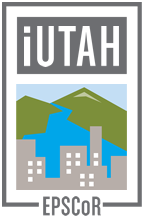2014 Research Catalyst Grantee

Suzanne Walter
Utah Valley University
Project Title
Investigating anthropogenic impacts on the Utah Lake-Jordan River transition zone using a multi-proxy approach
Abstract
This proposal describes a multidisciplinary study of the anthropogenic impacts on the geochemistry and physical characteristics of the wetlands and river at the Utah Lake—Jordan River transition zone in Utah Valley, Utah. The area has a distinct pre- and post-settlement land use history, and is experiencing rapid modern day urbanization. Therefore, the study location is uniquely situated to provide valuable record of changes in land use, nutrient enrichment, vegetation shifts, and river dynamics over time that can be used to inform current basin-scale planning and modeling efforts to prepare for a sustainable water future in the greater Salt Lake area. We will use a multi-proxy approach to identify changes in both nutrient and trace element inputs and flow dynamics at the lake- river transition zone, which begins at the only outlet of Utah Lake and extends approximately two river kilometers downstream. We will identify changes in carbon and nitrogen isotopic compositions and trace element abundances pre- and post-settlement, and we will use sediment distribution together with hydrological data to calculate changes in both channel form and flow. This data, combined with lead-210 and AMS radiocarbon dating, will enable us to establish the timing of aforementioned changes identified from the sediment cores. This will also provide background sedimentation rates against which to compare modern sediment yield data. These data not only evaluate the immediate questions concerning the magnitude and timing of historical change, but also provide information essential to understanding the impacts of those changes: How has the overall ecosystem been altered due to human activities, vegetation shifts, and river dynamics? Such data have the potential to transform the way in which we understand the long- and short-term human impacts on the water resources in the Great Salt Lake Basin. Furthermore, the outcome from this project will provide valuable insights for an integrated wetland-aquatic ecosystem management plan for Utah.
Collaborators
Gregory Carling, Brigham Young University
Weihong Wang, Utah Valley University


